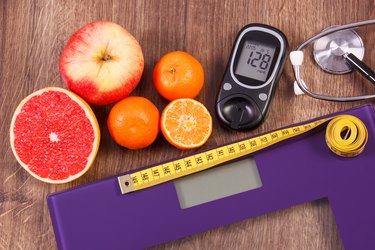
About 13 percent of all U.S. adults are now estimated to have diabetes, and most of them have type 2 diabetes, according to a 2020 report by the Centers for Disease Control and Prevention (CDC). That's more than 34 million people, so there's a good chance you or someone you know has faced a diabetes diagnosis — or may soon.
Shockingly, the same report found that more than 7 million adults with diabetes don't know they have it.
The good news: While type 2 diabetes is a chronic disease with potentially serious side effects, there are ways to manage it.
Here's your complete guide to type 2, from proven prevention methods to the best exercise and nutrition tips for living well with the condition.
What Is Type 2 Diabetes?

Type 2 diabetes is a complicated disease marked by chronically high levels of sugar (from food) in the bloodstream. The culprit is insulin resistance, which prevents your cells from absorbing the sugar like they should. When sugar lingers in the blood, it can lead to all sorts of health problems, from nerve damage to blindness to heart and kidney issues.
No one knows for sure why insulin resistance develops, but there are risk factors you can control and others you can't.
Read more about the causes and symptoms of type 2 diabetes, including who is most at risk.
What Is Prediabetes?

Type 2 diabetes doesn't usually develop overnight. Most people first enter a stage called prediabetes, marked by elevated high blood sugar that's not high enough to qualify as diabetes. About one-third of Americans have prediabetes, although more than 80 percent of them don't know it, according to the CDC.
That's a concerning stat, because people who have been diagnosed with prediabetes have about a 50 percent chance of developing type 2 diabetes in the next five to 10 years. However, there are steps you can take to lower your blood sugar levels and stop the progression.
Learn the causes and symptoms of prediabetes and the best methods to treat the condition.
How to Prevent Type 2 Diabetes

Whether you have prediabetes or are facing risk factors that make you more likely to develop diabetes, take heart: There are things you can do to lower your chances of type 2.
Since diabetes is a disease that affects the way your body processes food, it may come as no surprise that modifying your diet is a major prevention method. But exercising regularly, controlling your weight and getting blood tests at routine health check-ups are all important, too.
Get the full breakdown on the best methods to prevent type 2 diabetes at any stage.
How Weight and Diabetes Are Connected

The relationship between diabetes and weight is a complicated one. Case in point: Having overweight or obesity is a major risk factor for type 2 diabetes — but sometimes people at a healthy weight develop the condition, too.
What's more, type 2 diabetes is linked to both weight loss and weight gain — and gaining weight when you're treating your diabetes might actually be a good sign.
Explore all the ways weight and diabetes influence one another, including healthy approaches to weight loss when you've been diagnosed.
Building a Healthy Diet When You Have Diabetes

If you've been diagnosed with type 2 diabetes, you'll work with your doctor or health care team to keep the condition in check and lower your risk of complications. One of the most important ways to do that is by adopting a healthy eating plan.
While there's no one-size-fits-all "diabetes diet," there are guidelines you can follow to help control your blood sugar levels and improve your health overall, which will help you better manage the disease.
Here are the best and worst foods to eat when you have diabetes along with a sample menu of a healthy diabetes diet.
The Effects of Exercise on Diabetes

Getting regular exercise is another crucial way to stay healthy when you have type 2 diabetes. Moving more helps with blood sugar control, improves insulin sensitivity and can help you get to a healthy weight. And bonus: It can aid in relieving stress, which often worsens diabetes.
For the most effective workout plan, you'll want to incorporate aerobic exercise (think: walking, biking, swimming), strength training and mindful movement activities like yoga into your weekly routine.
Check out tips on how to get started and how to stay safe when exercising with diabetes.
Is this an emergency? If you are experiencing serious medical symptoms, please see the National Library of Medicine’s list of signs you need emergency medical attention or call 911.